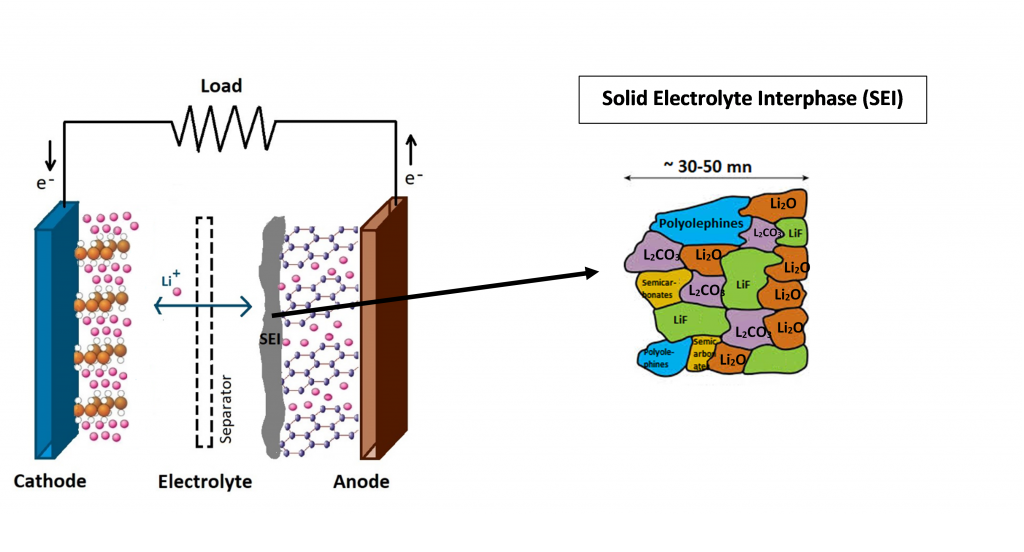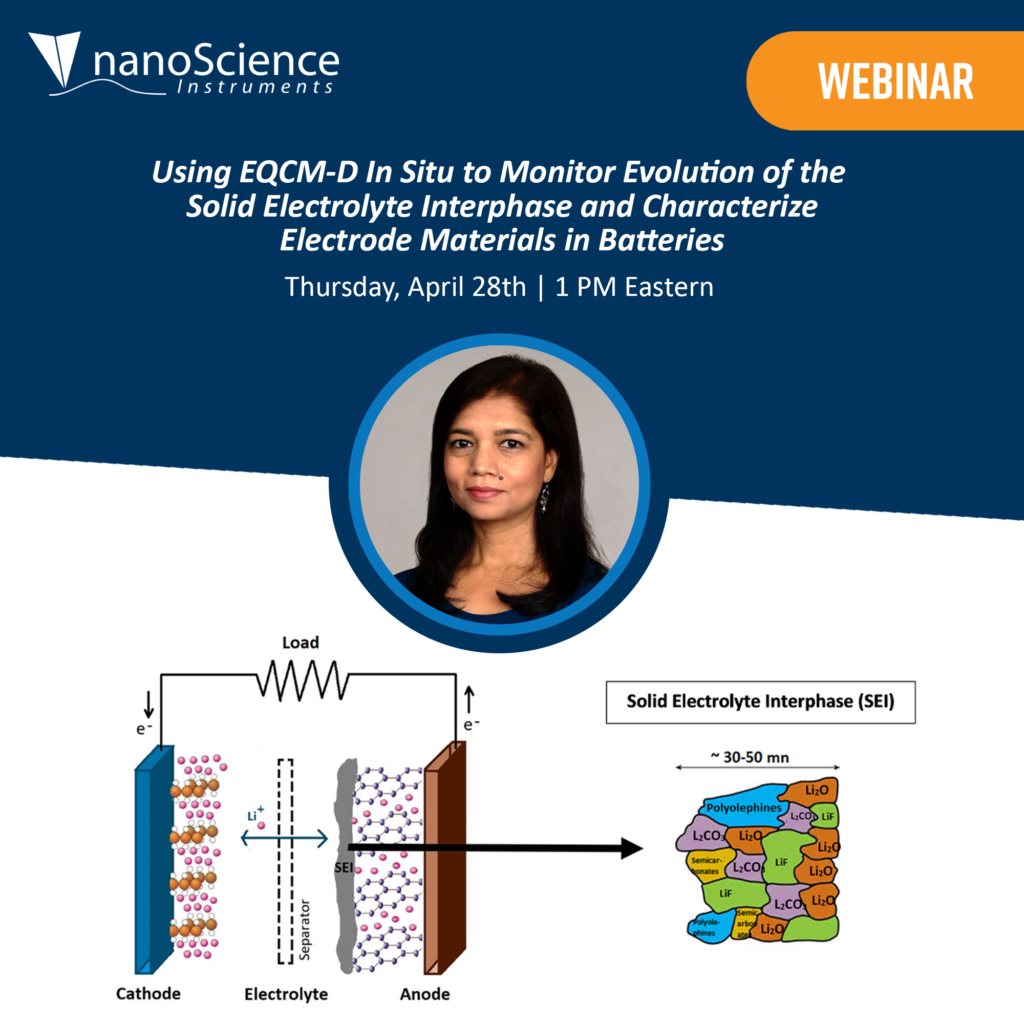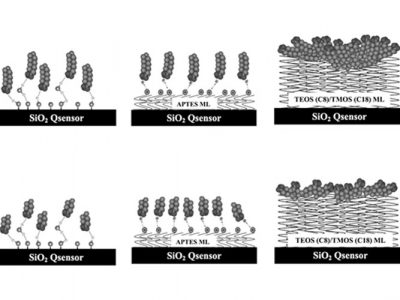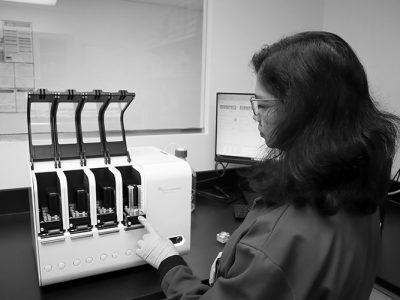This webinar discusses the critical problems that Electrochemical Quartz Crystal Microbalance with Dissipation monitoring (EQCM-D) can help resolve for optimizing the Solid Electrolyte Interphase (SEI) and related electrode chemistries for improved rechargeable battery technologies.
Performance of rechargeable batteries (e.g. Li-ion, Na-ion, Zn-ion batteries, etc.) largely depends on interfacial phenomena between the bulk electrolytes and electrode surfaces. A critical component of the reversible cycling performance in batteries is a stable and robust SEI. The SEI is a passivized layer formed on the surface of a battery anode due to the decomposition of some of the electrolyte.

For ideal battery performance, the SEI should be electrically insulating, mechanically robust, and ionically conducting to inhibit further decomposition of electrolyte and maintain anode capacity. Due to its complex and dynamic nature, understanding of SEI formation and real-time composition is still lacking.
Therefore, to further optimize battery performance and develop new electrode materials, it is crucial to understand the bulk and interfacial behaviors during the operation of batteries under In Situ conditions. QSense EQCM-D enables such In Situ real-time measurements of mass and viscoelastic properties at surfaces to aid in the analysis of the SEI alongside the development of new electrode materials.
This webinar will highlight the following application examples of EQCM-D:
- In Situ investigation of SEI formation in Li (ion) batteries
- Characterization of charge storage mechanism of cathode materials in Zinc-ion batteries





